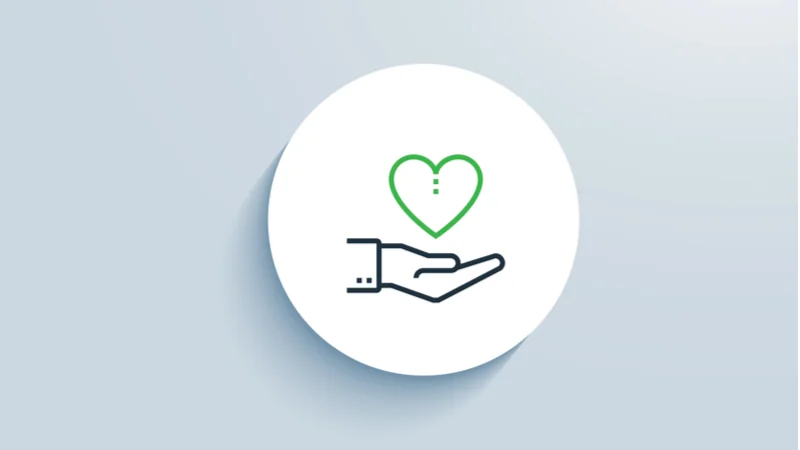Using Ethereum and Other Blockchains for Good
Blockchain has long been associated with volatile cryptocurrency markets. However, in recent years, the technology has been adopted for various uses, including legal contracts, managing assets via NFTs, and even non-profit projects that harness the blockchain for good purposes.
What is Ethereum?
Bitcoin is the most well-known of the blockchains, but the second-most well-known blockchain, Ethereum, could be instrumental in projects that use blockchain for good endeavors. Like Bitcoin, it is a decentralized and open-source blockchain platform that facilitates financial transactions. Describing itself to be “building on Bitcoin’s innovation,” the network is an ecosystem of apps, finances, and games. As a programmable blockchain, Ethereum allows for the creation of smart contracts, Defi services, and DAOs. It is this particular capability that matters most when it comes to non-profit projects.
How can the Ethereum blockchain be harnessed for good?
Blockchain technology has been utilized throughout the public and private sectors, such as in Estonia’s e-democracy program, in smart contracts for businesses, and in non-profits and DAOs.
- Participation-based model: Blockchain, by its nature, involves cooperation and buy-in. Each member of a blockchain-based organization (DAO) has a vote on any major decisions, such as on changes to the protocol, which constitute the organization’s charter and set of rules. The participants are the organization’s management.
- Consensus decision-making: Unlike the majority of traditional NGOs (non-governmental organizations), blockchain-based ones engage consensus-based decision-making to decide when/how to act. For example, the community could vote on whether to release funds for a particular project based on its protocol.
- Smart contracts and automation: Other than adjusting the factors involved in voting, smart contracts can automate processes and decision-making based on earlier agreements and whether those conditions were fulfilled. This relates to the concept of aid conditionality, a situation in which finances are released and made available only when the terms are met.
- Unchangeable, unhackable records: All blockchain transactions are conducted in a completely decentralized way. Once a transaction is validated, it’s permanent. This makes funds processed through a non-profit more transparent and straightforward.
Current uses
Right now, the Ethereum blockchain is the foremost technology for non-profit projects. It permits organizations to expand their reach on an international scale, garner support, create new models, and combine their knowledge in a common goal.
As described in Forbes Blockchain 50 (2020), the United Nations has deployed blockchain technology across a variety of its organizational operations. Blockchain has been used to manage ID documentation in war-torn countries where fraud is rife and residents often don’t have access to their IDs due to loss, destruction, or poverty.
Such technology can be used to fund social programs with conditional aid. The UN has spearheaded projects that have issued funds to refugees via blockchain-based biometric and ID scanning systems.
Currently, the UN is interested in such technologies and believes that they have three primary advantages over traditional models: innovative methods of finance and distribution, transparency in the aid process, and team motivation.
The well-known firm IBM is also using blockchain technology for social good. Some of its listed projects include Newlight Technologies, which focuses on recycling greenhouse gas for higher customer goods performance, making coffee more sustainable by tracking the distribution process, or even effectively recycling plastic. IBM notes the challenges that many non-profits face in effectively gathering necessary funds, and a transparent blockchain could increase trust.
VitaDAO
Although relatively new compared to the UN and IBM, VitaDAO focuses on increasing human longevity via blockchain technology. To do so, the team behind the project created a DAO that would let them digitally gather interested parties in one place and decide upon future projects/organizational goals, funding them and seeing them through to completion.
VitaDAO works via a project-cycle model in which the DAO invests in promising research; when this research is completed, it becomes an intellectual property non-fungible token (IP NFT), which is then resold to fund future research. Ethereum blockchain technology is at the heart of the organization and is what makes the functionality of the DAO a reality.
Future uses of blockchain
As non-profit, for-profit, and governmental sectors discover what works and doesn’t work when using blockchain technology for good, it will be less of a novelty and more of a refined technology. With consensus decision-making, blockchains and blockchain organizations that seek to evolve can do so effectively, utilizing their capabilities to vote on protocol changes and adapt to future needs.




